It was quite windy all night. After a breakfast of oatmeal, we refilled our water, packed up the tent and headed out for Swamp Park.

Down by the river behind the tent

Jo uses a water filter so that we can always have as much clean water as we want.
While there's a wide range of protozoa, viruses and bacteria that can make a person sick, the problem most commonly encountered here is giardia. This microscopic organism can't be seen, tasted or smelled. It can be found in even the most pristine looking of mountain streams.
Giardia is found worldwide, from the Arctic to the tropics, in ever increasing amounts. The first outbreak in Colorado is believed to have occurred in Aspen in 1965-66. If an infected animal or human defecates in or near a stream, giardia can spread via the water. Unfortunately, some of the dirtiest water is found on U.S. Forest Service land, including wilderness areas, where beef cattle and commercial horses and mules graze during the summer.
Once ingested, the organism attaches itself to the wall of the small intestine. Although it can be incapacitating, it is not usually life threatening. Symptoms usually include diarrhea, abdominal cramping, gas, bloating, dehydration, nausea, vomiting, weakness and loss of appetite.

The tent, nestled deep in the meadow (behind the tree)

Our view to the left
We were immediately confronted with two stream crossings. Fortunately we could do some rock hopping to get across.

Crossing #1

Crossing #2
The path led us though thick ferns, gorgeous aspen groves and zillions of flowers as we made our way up the steep terrain, leaving the river in the valley far below. We eventually lost count of all the different flower species we saw.

The path

The Sego or Mariposa Lily is the state flower of Utah since it was used as a vital food source by the Mormon pioneers in that state.
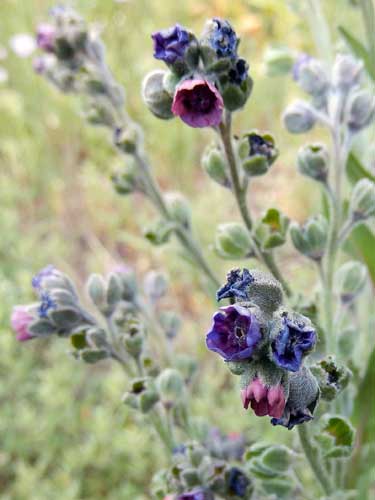
Houndstongue (also called gypsy flower and rats & mice) is a weed accidentally introduced from Europe, likely as a contaminant in cereal seed. In addition to poisoning animals who ingest it, it also produces large amounts of super sticky burs that cling to basically everything.

This small, solitary beer is possibly a Carpenter bee. The males are solid black and can not sting; the females are tan and can sting.
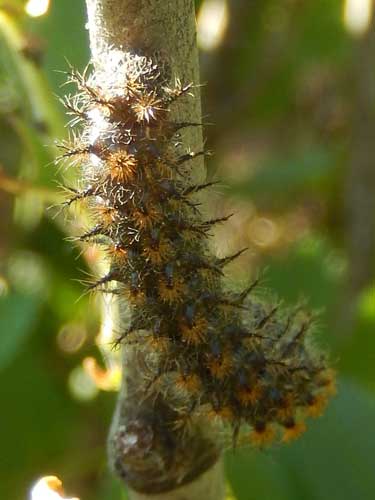
An unappetizing looking caterpillar
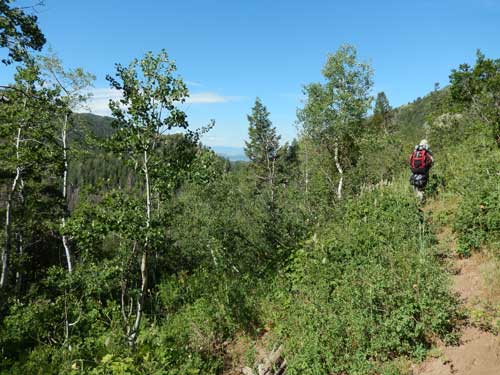
A large switchback takes us up from the valley floor.

The river is now far below us.

Blue flax can be found from sea level up to 10,000 feet.

Stink bugs get their name from the odor they produce in glands on their abdomen, believed to be a defense against predators.

Yup, this is the trail!

Tuber Starwort (or Sticky Chickweed) is native to this area.

Tiny Trumpet (Collomia) is a tiny flower in the phlox family.

Another large patch of ferns



With just a very quick glance, this looks like a bumble bee. But look closer at the wings! This is a type of Bee Mimic Beetle or Flower Scarab Beetle (Trichiotinus affinis). It feeds on the sugar from stems, leaves, fruit and flowers of many different plants.
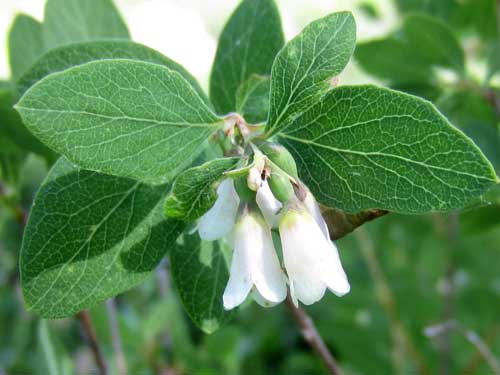
Roundleaf Snowberry is in the honeysuckle family. The white berries are very toxic and even the animals avoid them.

There are about 60 species of Angelica. The tall plant is in the parsley family.

Yay! Some Colorado Blue Columbine... our state flower

Aspen groves


Sulfur Paintbrush resembles its name.

Maaaaaaaaybe a type of Groundsel? Or a Ragwort? I'm really not good at identifying tiny yellow flowers, no matter how cute they may be.
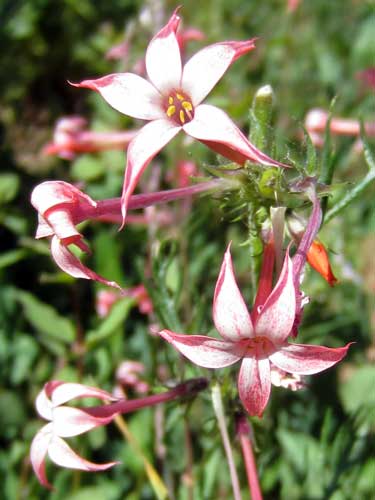
Scarlet Gilia, Skyrocket, Fairy Trumpets... the name is as diverse as the colors these flowers come in, ranging from deep red to bright white. Taxonomists have had a difficult time deciding how to categorize it as well, ever since explorers Lewis and Clark collected the first specimen in 1806.

Dusky Beardtongue is a type of penstemon. It is either dark purple or creamy white and is only found at higher elevations. From the picture, can you guess how it got its name?

And still higher we go!

A rosebud

Fendler's Meadow-rue is usually dioecious (meaning male and female flowers occur on separate plants). This is a male plant.
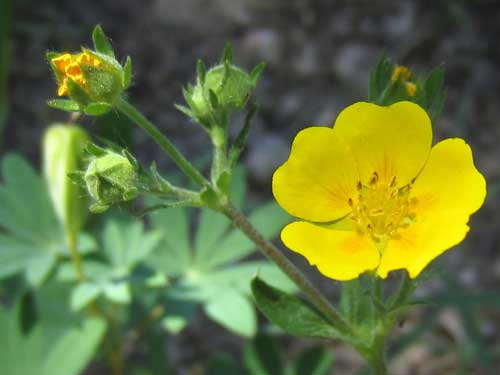
Another variety of cinquefoil
We rounded the next corner and were presented with a HUGE field of spectacular sunflowers! The entire field literally glowed in the afternoon sun.






